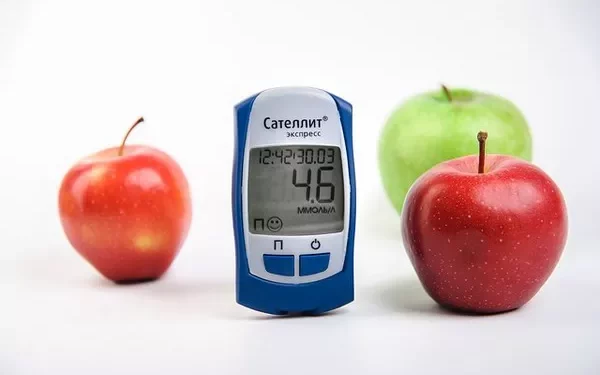Maintaining optimal blood sugar levels is essential for individuals with diabetes, as well as for anyone concerned about their overall health. Achieving balanced blood sugar levels helps to reduce the risk of both short-term and long-term complications associated with diabetes, such as cardiovascular disease, kidney failure, nerve damage, and even blindness. This article aims to explore the importance of blood sugar target ranges, factors that influence them, and how to effectively monitor and maintain these ranges for improved health outcomes.
The Importance of Blood Sugar Control
Blood sugar, also known as glucose, is the body’s primary source of energy. The body regulates blood sugar levels using the hormone insulin, which helps transport glucose from the bloodstream into cells for use. However, when the body is unable to regulate blood sugar effectively, due to insulin resistance or insufficient insulin production, this can lead to diabetes.
Managing blood sugar levels is crucial for people with diabetes, as elevated or low glucose levels can have severe consequences. Consistent monitoring and keeping blood sugar within recommended target ranges can help avoid the complications that come with fluctuating blood sugar levels.
Blood Sugar Target Ranges for Individuals with Diabetes
For most people, the goal is to maintain blood sugar levels within a specific target range, ideally close to that of a non-diabetic person. These target ranges vary based on individual circumstances, including the type of diabetes (Type 1, Type 2, or gestational), age, overall health, activity levels, and any other medical conditions. However, some general guidelines can help individuals establish and maintain healthy blood sugar targets.
1. Preprandial (Fasting) Blood Glucose Targets
Preprandial refers to blood glucose levels measured before meals. This is an important indicator of how well your body is managing blood sugar without the influence of food intake.
Target Range: The American Diabetes Association (ADA) recommends a preprandial blood glucose range of 80–130 mg/dL (4.4–7.2 mmol/L) for most adults with diabetes.
Why It Matters: Preprandial glucose levels reflect the body’s ability to manage baseline glucose. Elevated fasting levels can signal poor blood sugar control and may increase the risk of complications over time.
2. Postprandial (After Meal) Blood Glucose Targets
Postprandial glucose levels are measured after eating, and they give insight into how well the body manages the spike in blood glucose that occurs after consuming food. Postprandial glucose is especially important for managing meal-related spikes in glucose levels.
Target Range: For most people with diabetes, the ADA suggests a postprandial target of less than 180 mg/dL (10.0 mmol/L) one to two hours after the start of a meal.
Why It Matters: Consistently elevated postprandial glucose can be a sign of insufficient insulin action or carbohydrate management during meals. Reaching and maintaining this target range can help reduce the risk of diabetic complications such as neuropathy and retinopathy.
3. HbA1c Target
Hemoglobin A1c (HbA1c) is a long-term measure of blood sugar control, representing the average blood glucose level over the past two to three months. It is widely used to monitor the overall success of diabetes management.
Target Range: The ADA recommends that most adults with diabetes maintain an HbA1c of less than 7%.
Why It Matters: HbA1c reflects the consistency of blood sugar control over time. A lower HbA1c indicates better overall blood sugar management. However, the ideal target may vary depending on individual factors, including age, coexisting medical conditions, and the risk of hypoglycemia (low blood sugar).
4. Blood Glucose Targets for Children and Adolescents
Blood sugar targets for children and adolescents with diabetes are slightly different from those of adults. As children are growing, their bodies have different needs, and blood glucose levels can fluctuate more.
Target Range for Preprandial Glucose: 90–130 mg/dL (5.0–7.2 mmol/L)
Target Range for Postprandial Glucose: Less than 180 mg/dL (10.0 mmol/L)
Target HbA1c: The target for children is typically less than 7.5%, but this can vary depending on the child’s age and any other medical considerations.
Why It Matters: A balance is required in pediatric diabetes management. While strict control of blood sugar levels is essential, it is also important to avoid hypoglycemia, which can be more dangerous for children.
Factors That Influence Blood Sugar Targets
Several factors can affect the ideal blood sugar target ranges for a person with diabetes. These include:
1. Type of Diabetes
Type 1 Diabetes: In type 1 diabetes, the body does not produce insulin, and individuals require insulin injections or an insulin pump to manage blood glucose. Blood sugar targets are typically more stringent for type 1 diabetes due to the risk of diabetic ketoacidosis (DKA) if blood glucose levels are not managed properly.
Type 2 Diabetes: In type 2 diabetes, the body either does not produce enough insulin or cannot use insulin effectively. Blood sugar targets for type 2 diabetes may be less strict, especially in older adults, and can vary based on other factors like comorbidities or risk for hypoglycemia.
Gestational Diabetes: Pregnant women diagnosed with gestational diabetes need to keep their blood sugar levels in the target range to ensure the health of both the mother and the baby. Targets for gestational diabetes are typically more conservative, and managing blood glucose is crucial to prevent complications during pregnancy and delivery.
2. Age
Age can influence blood sugar targets, especially for older adults. For instance, younger individuals may be able to maintain stricter blood glucose targets, whereas older individuals with multiple health conditions may have less stringent targets to reduce the risk of hypoglycemia.
3. Coexisting Health Conditions
Conditions like hypertension, heart disease, kidney disease, and neurological disorders can all impact diabetes management and, therefore, blood sugar target ranges. For example, individuals with kidney disease may need to avoid aggressive blood sugar control to prevent further complications, whereas individuals with cardiovascular disease might benefit from tighter glucose control to reduce heart attack and stroke risks.
4. Hypoglycemia Risk
For individuals prone to hypoglycemia (low blood sugar), such as those on insulin therapy or medications that increase insulin secretion, blood sugar targets may be adjusted higher to reduce the risk of dangerously low glucose levels.
5. Lifestyle Factors
Physical activity, stress, and diet can all influence blood sugar levels. Regular exercise typically helps lower blood sugar, while stress can increase it. Diet, particularly carbohydrate intake, has a direct impact on postprandial glucose levels.
Why Target Ranges Matter for Diabetes Management
Maintaining blood sugar levels within the target range is not just about numbers—it is about reducing the risk of long-term complications associated with diabetes. Persistent high blood sugar levels (hyperglycemia) can lead to damage to blood vessels, nerves, and organs over time. Conversely, low blood sugar (hypoglycemia) can result in dizziness, confusion, and even life-threatening conditions if not treated promptly.
The key benefits of maintaining blood glucose within target ranges include:
Reduced risk of complications: Consistent control of blood glucose helps prevent complications like retinopathy, neuropathy, kidney disease, and cardiovascular issues.
Improved quality of life: People with well-controlled diabetes often experience fewer symptoms, such as fatigue or frequent urination, and are able to live a more active lifestyle.
Long-term health: Achieving and maintaining blood glucose targets lowers the risk of premature death due to complications related to diabetes.
How to Achieve and Maintain Blood Sugar Targets
1. Regular Monitoring
Monitoring blood sugar levels is crucial for individuals with diabetes. By checking blood glucose regularly, you can better understand how food, exercise, medication, and stress affect your levels. Common monitoring tools include:
Home Glucometers: These devices allow individuals to check their blood sugar at home.
Continuous Glucose Monitors (CGMs): CGMs provide real-time blood glucose readings, allowing for more detailed insights into blood sugar fluctuations.
2. Medications and Insulin Therapy
For many individuals with diabetes, oral medications or insulin therapy is required to manage blood glucose levels. Insulin can be delivered through injections or pumps, and the dosage may need to be adjusted based on activity levels, meals, and blood sugar readings.
3. Healthy Diet
A balanced diet plays a vital role in managing blood sugar. Focus on:
Low glycemic index foods: These foods raise blood sugar more slowly, helping to keep glucose levels stable.
Carbohydrate counting: Monitoring carbohydrate intake helps individuals predict how meals will affect their blood sugar levels.
Portion control: Eating appropriate portion sizes reduces the risk of overeating and spiking blood sugar levels.
4. Exercise
Physical activity helps the body use insulin more effectively and can help lower blood sugar levels. Both aerobic exercises (like walking, running, or swimming) and resistance training (like weightlifting) are beneficial.
5. Stress Management
Stress can raise blood sugar levels. Techniques like yoga, deep breathing, and mindfulness can help reduce stress and improve blood sugar control.
Conclusion
Blood sugar target ranges are an essential part of managing diabetes effectively. By adhering to these targets, individuals with diabetes can significantly reduce the risk of complications and improve their overall well-being. It’s important to remember that these target ranges may vary for each individual based on various factors, including the type of diabetes, age, lifestyle, and other health conditions. Achieving these targets requires a combination of careful monitoring, healthy lifestyle choices, and, when necessary, medical intervention.
Related topics:
What Is a Normal Blood Sugar Rate?


























